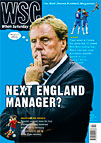 As Arsenal celebrate their 125th anniversary with the unveiling of three bronze statues outside the Emirates, Jon Spurling looks at their somewhat disputed origins
As Arsenal celebrate their 125th anniversary with the unveiling of three bronze statues outside the Emirates, Jon Spurling looks at their somewhat disputed origins
With a parade of former stars prior to the league victory over Everton, and the official unveiling of the bronze statues of Herbert Chapman, Thierry Henry and Tony Adams outside the Emirates Stadium the day before, Arsenal celebrated their 125th anniversary in some style. Over the last few years, the Arsenal History Project, run by the Arsenal Independent Supporters’ Association (AISA), has undertaken a review of the club’s often murky formative years. One of the main drivers of the Arsenal History Project, Tony Attwood, commented on his blog: “In the early days of writing histories of the club, people relied on their memories or occasional comments from others. This built up a range of documentation all based on the flimsiest of evidence.” The Woolwich Arsenal blog has highlighted and questioned several elements of the story of the club previously been taken as gospel.
Given the sporadic nature of newspaper reports and the absence of any surviving eye witnesses or visual evidence, it is hardly surprising that there is conjecture about what really happened 125 years ago. The story handed down over the generations was that on December 11, 1886, a group of footballers from the Dial Square workshop in the Woolwich Arsenal crossed the Thames on the “famous” Woolwich ferry and walked to a piece of land which one of them had discovered on the Isle of Dogs. The boys from Dial Square won 6-0 against the Eastern Wanderers, and then went back to Woolwich afterwards. The game was played on a rough-and-ready surface. The club secretary Elijah Watkins commented: “Talk about a football pitch! I could not venture to say what shape it was. I was going to say a ditch but I think an open sewer would be more appropriate.”
The details are murky. Official histories have mentioned other Woolwich Arsenal armament factory clubs that predated Dial Square. But as no written evidence exists of their playing records, it seems to have been taken as read that Dial Square were the distant forefathers of Arsenal FC. The fact that Dial Square travelled to the Isle of Dogs – an arduous journey and a venue with precious little available municipal land – also seems curious given that there must have been some football pitches in nearby Woolwich.Additionally, there was no Woolwich ferry in operation until 1898 and there is no record anywhere of the Eastern Wanderers in 1886.
Crucially, the evidence that exists of that first match hinges on the testimony of just one onlooker – Elijah Watkins, whose tale was published in Association Football And The Men Who Made It in 1906 – some 20 years or so after the event. The suggestion is that the teams, the dates and the venues may well have become muddled over time.
Five years later, in 1891, Royal Arsenal lost 2-1 to Derby County in the FA Cup. In the club’s 1914-15 handbook it was claimed that after that match Arsenal stars Peter Connolly and Bob Buist were approached by Derby boss John Goodall and offered professional terms. This has been repeated numerous times since. The truth is that Buist did not actually play in the game, but joined Arsenal some months later. The club, alarmed by the turn of events, and determined to retain the services of its best players, decided that turning professional in 1891 was their only viable course of action. The club resigned from the London and Kent FAs, which outlawed professionalism. They were not expelled, as has often been suggested.
Another myth was that the other teams from the amateur London and Kent leagues and cup competitions, including Clapton and Chatham, refused to play the newly professional outfit. Many of the 35 opponents who faced the Royals in friendlies in the 1891-92 season had also done so in previous years, when they were an amateur side. So although there may have been a lingering suspicion and mistrust of the club from rivals, there was no boycott on the pitch, despite what a raft of Arsenal historians – me included in Rebels For The Cause – have claimed down the years. Time for a spot of revisionism on all our parts, perhaps.
The Arsenal History Project is planning to publish its findings in 2012. Attwood admits: “We are trying to verify Arsenal’s past and where we think it is wrong, put it to rights, and show our evidence.” Perhaps this more rigorous approach to football clubs’ early histories needs to be applied to all teams, not just the Gunners.
From WSC 300 February 2012